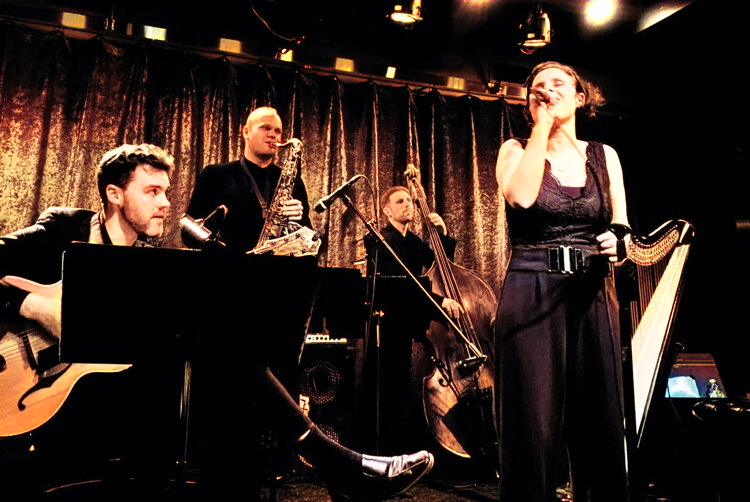By Andrew Poretz . . .
Margot Sergent made her fourth Birdland appearance Thursday night in her show, The Edith Piaf Experience. The iconic French singer Edith Piaf’s life was a seemingly endless series of tragedies that led to her early demise. Born exactly one week after Frank Sinatra in 1915, Piaf has been the subject of seemingly endless tribute shows in the past decade. The inimitable (except by the near-parody) Piaf continues to inspire new performers to carry her torch.
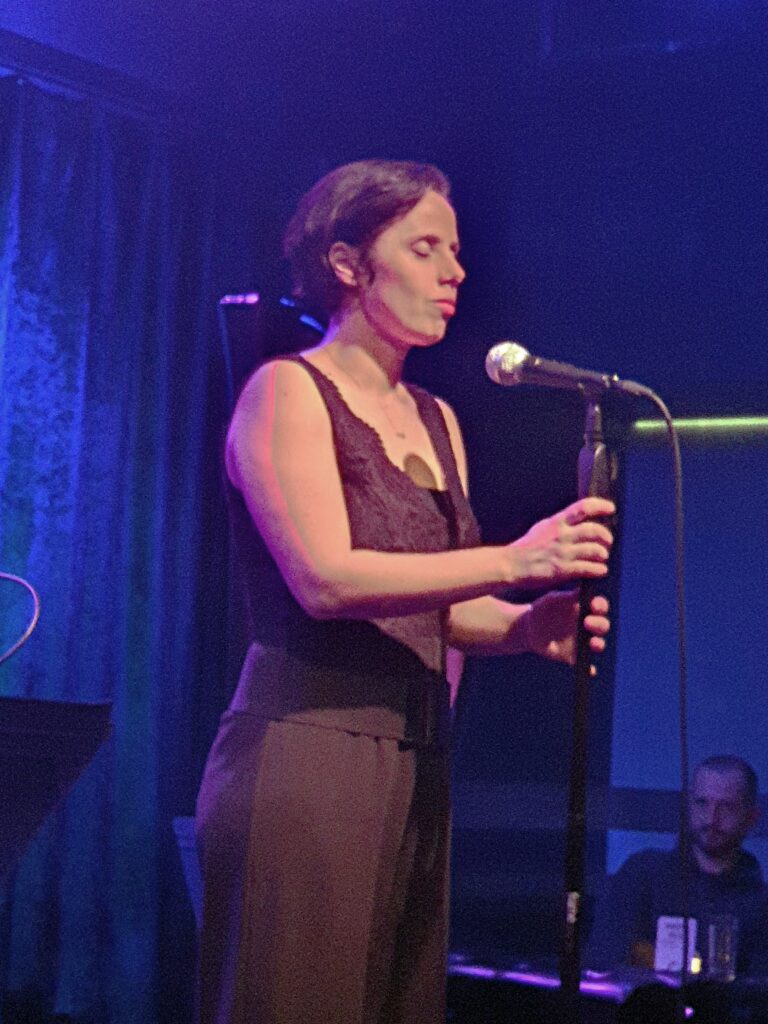
Ms. Sergent is one such performer, but The Edith Piaf Experience, despite the title, is not a “tribute act.” The comely brunette singer, harpist and actor has created a musical bouillabaisse of Piaf’s music and stories with an infusion of jazz, mixing French and American culture. Margot uses her harp as a musical bard to weave an imaginary story—what if the love of Piaf’s life, French boxer Marcel Cerdan, had not died in a 1949 plane crash en route to joining her in New York, and she instead established herself in America?
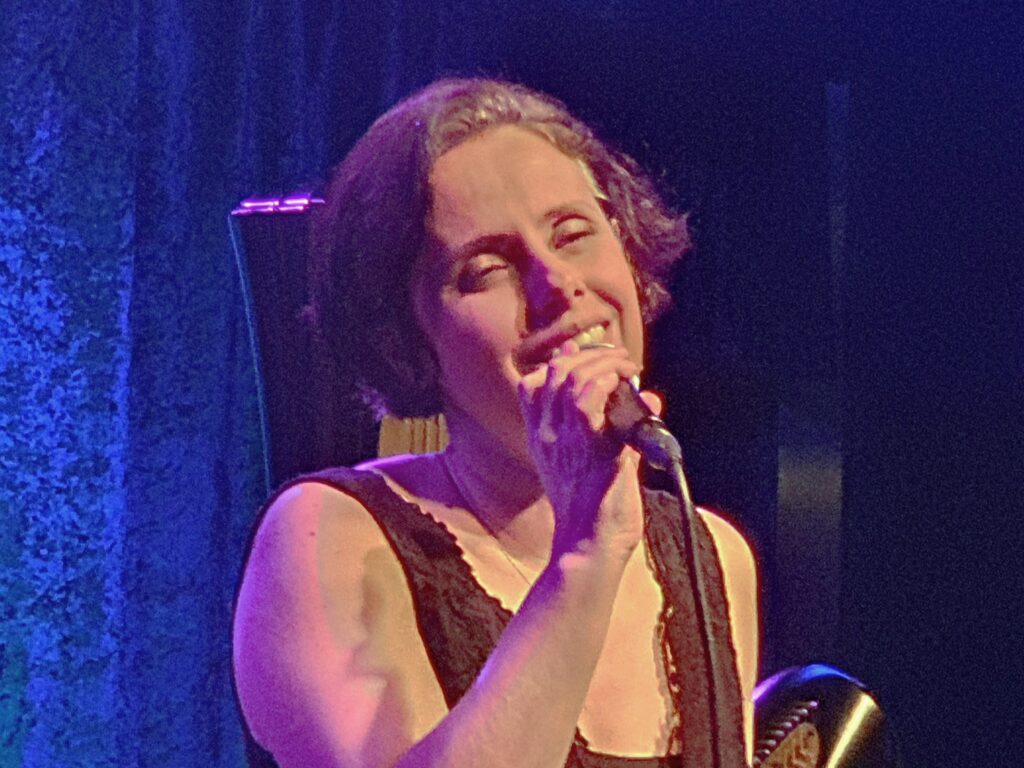

Margot is a fine singer with a conversational delivery. She possesses a lovely, expressive voice. She has the extraordinary ability to convey the meaning and emotional resonance of a song in French even to those who don’t speak a word of the language. Margot was backed by guitarist Patrick Brennan, clarinetist/saxophonist Linus Wyrsch and bassist Alec Safy. When she added her harp to the mix, with its ethereal quality and her exquisite voicings, magic happened.
The star opened with “Padam” (Henri Contet/Norbert Glanzberg), a fast waltz. “A part of the French culture will meet jazz,” she declared to the packed room. She explained how she came to Piaf’s music—which she had not really known—when her songs were frequently requested. Gradually, she fell in love with Piaf and the music. Piaf’s songwriters, she noted, wrote powerful songs that made her the “voice of the invisible.”
Margot’s rendition of “Non, je ne regrette rien” (“No Regrets”), by Michel Vaucaire and Charles Dumont, stripped the somewhat ponderous march of Piaf ‘s arrangement in favor of a lighter approach, with the feel of a travelogue movie song.
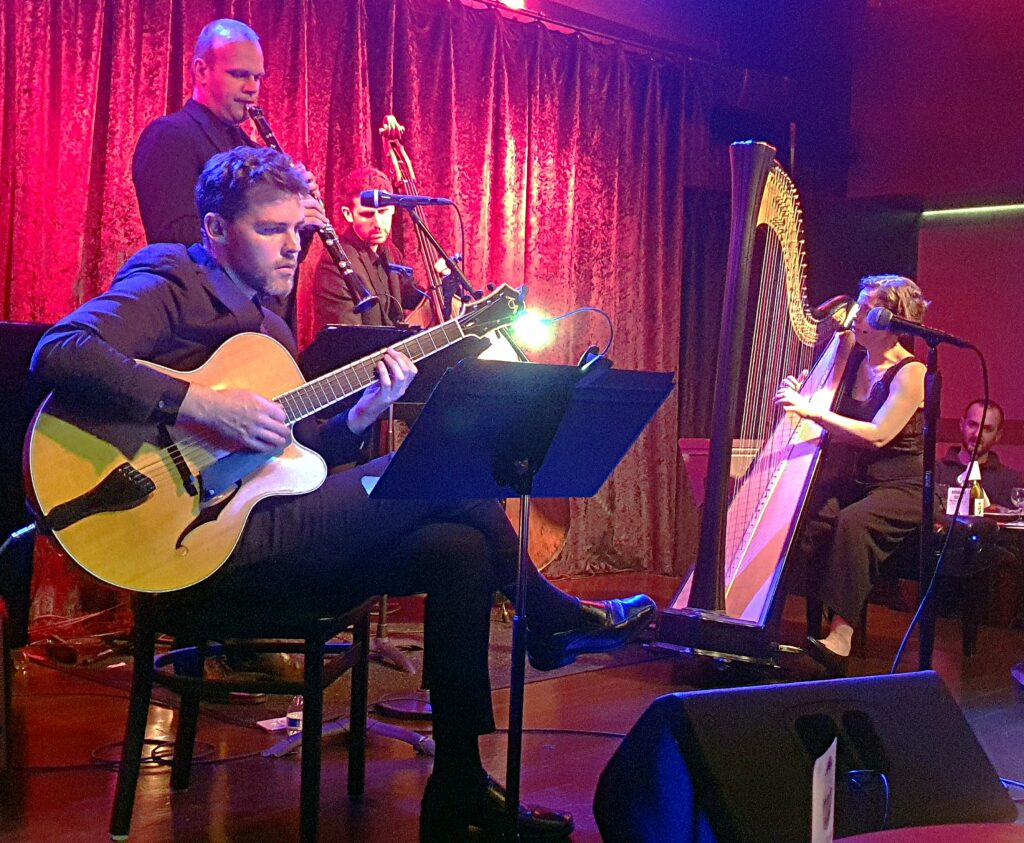

“Ménilmontant” (Charles Trenet). This became quite a swinger. Linus Wyrsch, with a style reminiscent of jazz great Pete Fountain, threw in a quote or two. Interestingly, Ménilmontant is also the name of the Paris neighborhood where Piaf once lived. The star’s harp made its first appearance on “La Bohème” (Jacques Plante/Charles Aznavour). Patrick Brennan’s impeccable guitar playing blended beautifully with Margot’s harp on this gorgeous waltz ballad.
Margot performed another Charles Trenet number, the poignant breakup song “Que reste-t’il de nos amours.” Alec Safy’s extended bass solo was quite melodic, after which Margot sang Albert Beach’s English lyrics (as “I Wish You Love”). This was truly a thing of beauty.
Josephine Baker, an influence on Piaf, famously said, “I have two loves: my country and Paris.” “J’ai deux amours” (Géo Koger and HenriVarna/Vincent Scotto), was one of Baker’s signature songs. In the rubato harp introduction, Margot’s delicate, ethereal touch, aided by Mr. Brennan’s guitar harmonics, was sublime. The piece then took on something of a bolero feel.
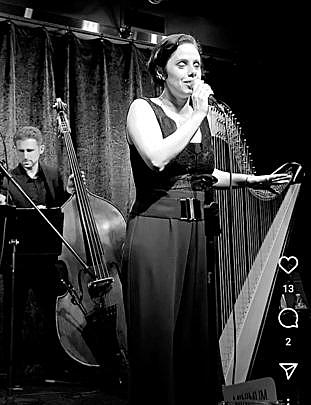

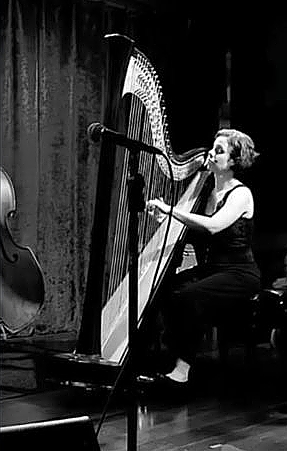

The newly recorded “The Apartment Next Door” is an original song for which Ms. Sergent wrote the music, sharing lyric credits with Eva Guertz. It is the true story of Margot’s beautiful friendship with a neighbor when she was experiencing a low point in her life. The star recited the poetic English lyrics to set up this dramatic story song before playing it. While this was helpful for understanding the story, the arrangement and her delivery brought it together. It was this moment when the new listener would fall in love with Margot Sergent.
“I will do a duet by myself,” the star quipped, before changing the energy with a very upbeat “A quoi ça sert l’Amour” (“What is love for?”) by Michel Emer. This fast, snazzy number had five modulations, and was reminiscent of Nat King Cole’s hit “L-O-V-E” ”
Margot set up the songs with profound and personal Piaf stories like a voiceover, with background comping by Mr. Brennan. “The Accordionist” (Michel Emer), with rubato verses alternating with a repeated chorus, is reminiscent of Piaf’s recording of Philippe-Gérard’s “Le chevalier de Paris.” (That song later became “When the World was Young,” with Johnny Mercer’s lyrics.) The song ended with Margot’s powerful, teary ending.


A couple of numbers are de rigueur for Piaf shows. Margot encouraged the audience to sing along with “La vie en Rose “(Louiguy/Edith Piaf). One could spy couples holding hands, their heads touching. For “Hymn to Love” (Hymne à l’amour) (Marguerite Monnot and Edith Piaf), Margot recited an excerpt of a Piaf interview while a gentle bass solo underscored the gravity of the moment Piaf’s love died. She sang with just the bass, before the rest of the trio and her own harp joined. This was a stunning approach.
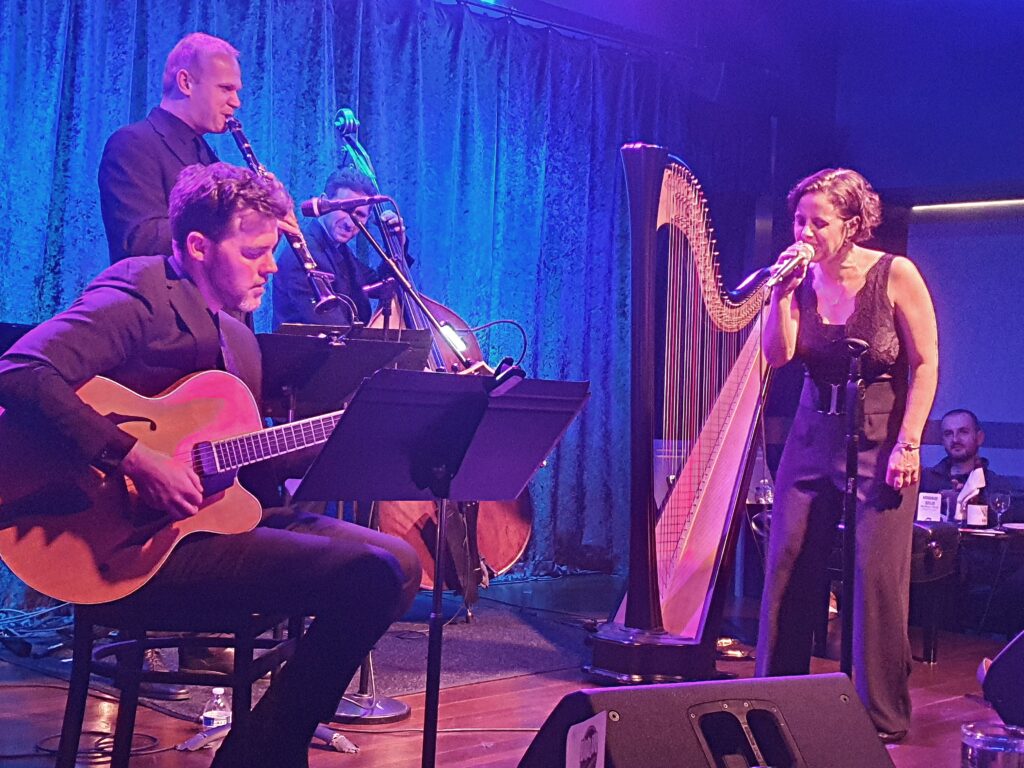

The finale, a singalong of “Sous le ciel de Paris “ (Jean Dréjac/ Hubert Giraud) (“under Paris’s sky”) made for a satisfying “fini.”
Follow Margot Sergent on Instagram @margotsergentmusic, and subscribe to her YouTube channels @MargotSergentOfficial and @margotinnewyork.
Margot Sergent – The Edith Piaf Experience took place at Birdland Theater (344 West 44th Street between Eighth and Ninth Avenues) www.birdlandjazz.com
Photos: Andrew Poretz except where indicated
Featured photo: Flora Vannineuse (Instagram: @empreintez_moi)


